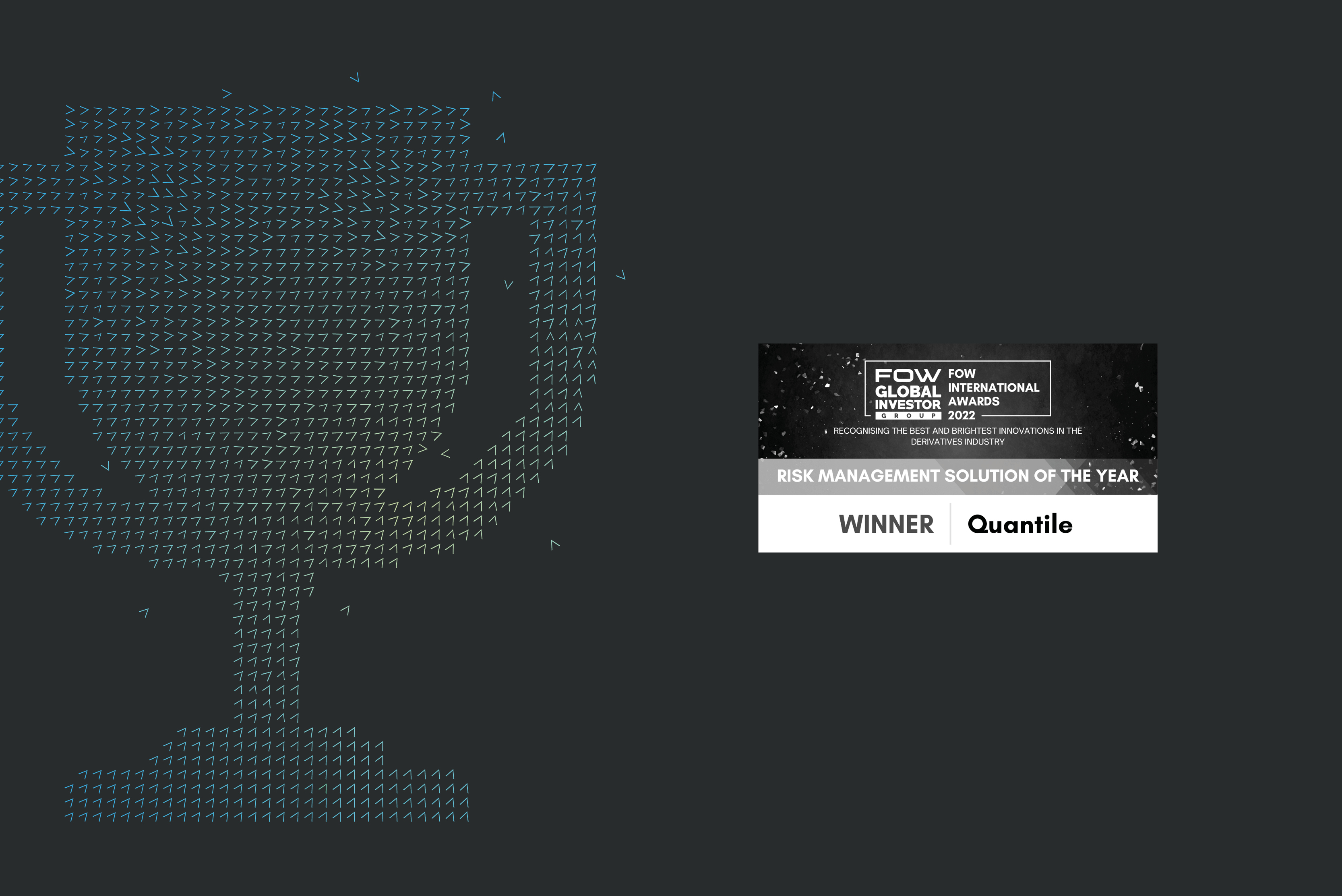Sharpening the tools: Preparation for UMR phase five
Initial Margin | Special Report 2021 | Risk.net

Varqa Abyaneh, Chief Product Officer
A forum of industry leaders, including Varqa Abyaneh, Quantile’s Chief Product Officer, discussed the suitability of Simm for phase five firms, how they can optimise portfolios to minimise margin costs and how the lessons learned from previous phases can help them prepare. Read Varqa’s Q&A below.
Despite the delay to phase five uncleared margin rules (UMR) implementation, many firms have made little preparatory progress. What implementation priorities should they focus on as the deadline approaches?
Firms set to go-live in phase five can look to the lessons learned from previous phases when determining their implementation priorities. These priorities broadly fall into three areas: preparation, calculation and optimisation.
First, firms should ensure they have the correct legal documents in place with their counterparties and custodians so margin amounts can be agreed and transferred.
Second, they should decide whether to calculate their trade-level risk sensitivities – inputs to the standard initial margin model (Simm) calculation – internally or via a third-party vendor. Implementing a daily reconciliation service, such as Acadia’s IM Exposure Manager, can be helpful to streamline and simplify the agreement and transfer of IM amounts once live.
Third, firms need to determine if their portfolio requires proactive risk management to optimise their total uncleared margin requirements. By adopting multilateral portfolio optimisation – such as Quantile’s IM optimisation service – firms can reduce their counterparty risk and associated margin funding costs. Firms should perform the relevant onboarding work to ensure they are ready to optimise their portfolios when they go live.
How suitable is the standard initial margin model (SIMM) for phase five clients?
The suitability of SIMM can be split into two categories – suitability from an implementation perspective and suitability as a measure that adequately captures the key risks.
The SIMM model has been highly successful in enabling in-scope firms to adopt the uncleared margin rules quickly and easily. The standardisation of the risk inputs via the CRIF file format, pioneered by ISDA, aids reconciliation between counterparties and in turn, increases efficiency. SIMM is also simple to calculate, as it is an analytic function of the CRIF risk, which doesn’t revert to numerical methods or historical simulations.
However, given the vast extent of the uncleared margin rules and the breadth of trades in-scope, it is unlikely that one standardised model can correctly capture all risks from all trade types. This is of particular importance where counterparties consider replacing their existing initial margin calculation method with the SIMM model, e.g. for trading between hedge funds and dealer banks.
SIMM, while robust and well governed, may not be suitable to replace existing exposure models used by derivative counterparties to calculate appropriate margin levels outside the fulfilment of regulatory requirements. As an example, risks arising from physical FX principal exchanges such as in cross-currency swaps and FX forwards, as well as from equity options, are excluded from the SIMM calculation in most jurisdictions, yet included in typical in-house exposure calculations. However, SIMM does allow the voluntary inclusion of such risk factors. Whether or not the industry will accept it as overriding their own models for exchanging voluntary initial margin, or margin levels over and above the regulatory requirement when facing higher risk counterparties, remains to be seen.
How can phase five firms optimise portfolios to minimise margin costs?
The uncleared margin rules have created an opportunity for innovation to systematically reduce risk and margin costs for both cleared and uncleared portfolios. As participants trade with multiple counterparties in multiple markets, the key is to approach the issue from a scalable, multilateral perspective. Multilateral portfolio optimisation creates more opportunities to net down risk, enabling firms (and their counterparties) to benefit from superior risk reduction and reduced margin costs.
Quantile’s initial margin optimisation service already supports all of the G15 banks and many other market participants of all sizes to reduce their costs associated with funding initial margin. It works by analysing counterparty risk and proposing a set of new market risk neutral trades that deliver margin cost reductions without changing net risk positions.
The service offers regular optimisation ‘runs’ for uncleared and cleared FX and interest rate asset classes, plus uncleared equities. By offering optimisation for both cleared and uncleared products, Quantile connects liquidity pools and generates increased capital and margin benefits for clients.
What can phase five firms learn from the experience of previous phases?
One of the key lessons learned from earlier phases is how quickly the margin numbers can grow. Once a firm is live, trading activity will see them quickly go from having no in-scope trades, and therefore no margin, to having a growing number of in-scope trades with associated margin costs. Phase five firms should prioritise how to manage these increasing margin numbers and costs – and implement a solution before they place a strain on critical resources.
In 2020, new trading activity in response to the emergency Federal Reserve rates cuts increased the margin required for in-scope firms by ~20% – despite no new firms coming into scope. The ISDA Margin Survey shows that uncleared margin has been rising for the last few years, and with phase five increasing the number of counterparties involved and the amount of collateral posted, there is a growing demand for margin optimisation services. In response to the increased demand from clients, we have increased the frequency of Quantile’s initial margin optimisation runs. Our client network has grown by 37% in the last year and our service offers material initial margin reduction, often in excess of 50%, across FX, interest rates and equities.
In what ways have vendors sharpened their IM tools, tech and services in recent months in preparation for phase five?
As more counterparties come into scope, vendors across the industry are streamlining their solutions and increasing their focus on automation. Quantile’s services were built for performance, and we use advanced cloud technology so we can quickly scale to deliver our optimisation service in line with market demand. Recent product developments include expanding our service to optimise eight new cleared currency pairs at LCH ForexClear, as well as new runs to support cleared interest rates at LCH SwapClear. We also release weekly enhancements to our portal, algorithms and onboarding process to ensure the service continues to meet the requirements of firms in all phases.
An innovation to specifically support phase five firms is the ability to optimise across multiple clearing brokers and prime brokers and maximise the efficient utilisation of thresholds. We also intend to make available additional analytical and margin calculation tools to facilitate effective risk management of total IM postings.
First published in Risk.net | Initial Margin 2021 | Special Report
Related Content

Quantile Wins Risk Management Service of the Year for the Second Year Running

The countdown to conversion is on
